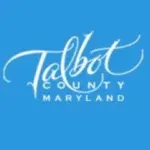In the decades before and after the Civil War, Frederick Douglass was among the most influential Americans of any race. In this article you will find the sites and events that honor Talbot County’s native son and explore the culture that shaped his life.
The work of this galvanizing African American orator encompassed writing, publishing, activism, and business in the United States and United Kingdom, and government posts in the U.S. and the Caribbean. He was the most photographed American of the 19th century.
And while his network of colleagues included presidents, religious and social leaders, and prominent authors, throughout his life he drew strength from the challenges of his early years in Talbot County — today the site of multifaceted celebrations of his birth. These include the dedication of a 100-acre park in 2018 to inspire generations to come, the Frederick Douglass Mural on Easton’s Rail to Trail, a four part driving tour, and more.

Born into slavery, never knowing his father and separated from his mother as a child, Douglass managed to teach himself to read and write, which led him to become one of the most powerful and influential speakers of his day. He was not only an antislavery advocate, but a clarion voice for women’s rights and educational causes. “Right is of no sex, Truth is of no color, God is the Father of us all, and we are all Brethren,” was the motto of a newspaper he owned and published.
At the height of his fame, in his final two decades, he returned to Talbot County four times.
“When one has advanced far in the journey of life,” he wrote in the “Life and Times of Frederick Douglass,” “when he has seen and traveled over much of this great world, and has had many and strange experiences of shadow and sunshine, when long distances of time and space have come between him and his point of departure, it is natural that his thoughts should return to the place of his beginning, and that he should be seized with a strong desire to revisit the scenes of his early recollection, and live over in memory the incidents of his childhood.”
2018 marked his bicentennial along with the 140th anniversary of an 1878 trip to Easton that included addresses at two Black churches, a speech before a racially mixed audience at the county courthouse, and an expedition to locate his birthplace and the site of his grandmother’s cabin. He collected soil to carry to Cedar Hill, his new home in Washington, D.C., which is today a national historic site.

In a way, he was designated for greatness by his mother . She named him Frederick Augustus Washington Bailey — with one middle name from the first Roman emperor and the other from the first American president. He chose the surname Douglass at about age 20, upon beginning his new life with his wife in the North, after escaping the bonds of slavery.
Today, travelers to Talbot County may see, through a series of four self-guided driving tours, the rich landscape and vibrant waterways that inspired the young Frederick Bailey. “The squirrels, as they skipped the fences, climbed the trees, or gathered their nuts, were an unceasing delight to me,” Douglass wrote of his childhood. “The mill-pond, too, had its charms; and with my pin-hook and thread-line, I could get amusing nibbles.”
The tours include the Talbot County port town of St. Michaels, which is filled with Douglass sites. The St. Michaels Museum at St. Mary’s Square hosts regularly scheduled guided walking tours, the Chesapeake Bay Maritime Museum interprets his story at the Mitchell House, and there is a small historical marker in the Frederick Douglass Park on Talbot Street.
Scholars believe The Hill in Easton is the oldest community still in existence in the nation continuously inhabited by free persons of color. It encompasses the two churches where Douglass spoke in 1878, Bethel African Methodist Episcopal and Asbury United Methodist, and is an active center of archaeological activity. The self-guided driving tours can be found at FrederickDouglassBirthplace.org.

A groundbreaking ceremony for a new 107-acre park in Douglass’ honor took place in 2018.
Douglass’ first book, “Narrative of the Life of Frederick Douglass, an American Slave,” begins, “I was born in Tuckahoe, near Hillsborough, and about twelve miles from Easton, in Talbot County, Maryland.”
The park — named Frederick Douglass Park on the Tuckahoe — is located upstream from the farm where Douglass was born and provides a place to explore his life and legacy. Interpretive panels overlook sweeping views of the Tuckahoe watershed and landscape.
Learn more about Frederick Douglass and the legacy he has inspired at FrederickDouglassBirthplace.org.













